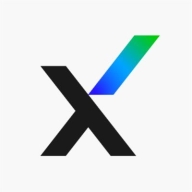

Trellix Network Detection and Response and Trend Vision One compete in the cybersecurity space. Trellix appears to have an advantage in customer support and pricing, while Trend Vision One offers compelling features that justify its cost.
Features: Trellix Network Detection and Response includes an advanced threat intelligence network, tool integration for comprehensive visibility, and high-accuracy threat anticipation. Trend Vision One offers endpoint protection, cross-layer detection capabilities, and detailed threat analysis and reporting, focused on comprehensive security and analytics.
Room for Improvement: Trellix can enhance its integration with newer security tools, refine its threat intelligence for emerging threats, and improve the depth of reporting. Trend Vision One might consider simplifying its deployment process, reducing false positives, and providing more detailed user training.
Ease of Deployment and Customer Service: Trellix has a straightforward deployment process with robust customer support, making integrations seamless. Trend Vision One, despite its complexity, provides effective guidance and personalized support, enhancing operationalization over time.
Pricing and ROI: Trellix Network Detection and Response offers a cost-effective setup appealing to those prioritizing immediate ROI. In contrast, Trend Vision One may require higher initial costs but promises substantial long-term ROI due to its extensive feature set, ideal for those prioritizing deep security analytics.
Our company went through a ransomware event, and if Trend Vision One had not stopped it, that could've closed the company's doors.
Trend Vision One has improved our ROI by 30 percent.
Thankfully, we also had cyber security insurance, and the insurance covered the incidents because, through Trend Micro and the implementation of the solution, along with the data it provided, we were able to demonstrate what had happened.
Technical support needs improvement as sometimes engineers are not available promptly, especially during high-severity incidents.
It's not just about high-level support with the chatbot; rather, when an issue occurs, we have the experts on-site and ready to respond swiftly, which is crucial.
Trend Micro supported us throughout the transition from on-prem servers or other vendors, providing top-notch service at all times.
Support responds quickly, and together we’ve been able to solve all challenges in our day-to-day operations.
I’d give scalability a 10 because nearly everything is integrated.
Our growth over the past three years has never caused performance or expansion issues.
I don't think I've encountered any issues with scalability; we're growing steadily, and I believe Trend Vision One can keep up with our demand.
Trend Vision One works exactly as intended and has never hindered our operations, feeling more a collaborator than a roadblock.
The stability is very high.
Stability is critically important for us with Trend Vision One; it is very stable, providing continuous 24/7 support.
There should be improvements in AI intelligence, faster decision-making, and a more responsive technical support team.
Trend Vision One does not initially disclose to customers that they need to purchase additional licenses and pay more for integrations.
The deployment can be complex, and we'd like an easier process, especially when integrating with on-prem and cloud environments.
For XDR threat investigation, there is not enough documentation about how to search for different keywords.
I find the credit model non-transparent—you can't always tell how many licenses apply to which product.
I have seen others that are double or triple the price.
Customers who cannot afford CrowdStrike's pricing can easily opt for Trend Vision One.
Trellix NDR provides an essential defense by automatically responding to network incidents that firewalls may not catch.
The most important features of Vision One include visibility, AI integration, attack pattern analysis, predictive analytics, and centralized visibility and management across protection layers.
The most critical feature of Vision One is that it gives us a single console for threat management.
Its ability to identify unmonitored endpoints and perform log inspection, which establishes operational baselines and detects anomalies, proves invaluable for threat identification.
| Product | Market Share (%) |
|---|---|
| Trend Vision One | 2.0% |
| Trellix Network Detection and Response | 2.5% |
| Other | 95.5% |


| Company Size | Count |
|---|---|
| Small Business | 19 |
| Midsize Enterprise | 8 |
| Large Enterprise | 19 |
| Company Size | Count |
|---|---|
| Small Business | 39 |
| Midsize Enterprise | 11 |
| Large Enterprise | 34 |
Detect the undetectable and stop evasive attacks. Trellix Network Detection and Response (NDR) helps your team focus on real attacks, contain intrusions with speed and intelligence, and eliminate your cybersecurity weak points.
Trend Vision One offers comprehensive protection for endpoints, networks, and email with centralized visibility. It is valued for its attack surface management, real-time threat detection, integrated management, ease of deployment, and user-friendly interface.
Trend Vision One provides a sophisticated security platform combining endpoint, network, and email protection with features like virtual patching and advanced AI capabilities. Its centralized management and integration with platforms like Office 365 and Azure make it an attractive option for organizations needing streamlined workflows and efficient risk management. While it boasts robust integrations and ease of use, enhancements are needed in reporting, tool integration, and reducing false positives. Users call for better support infrastructure, faster response times, and improved threat intelligence capabilities. Despite some complexity, its AI and ML features significantly enhance threat detection and response.
What Features Define Trend Vision One?
What Benefits Should Users Look For?
Trend Vision One is implemented in industries that require endpoint protection, ransomware defense, and incident response, being flexible for both on-premises and cloud environments. It is used to monitor servers, networks, and endpoints, providing features like email protection, behavioral detection, and threat visibility. Organizations benefit from AI and ML, improving their security posture and response capabilities.
We monitor all Network Detection and Response (NDR) reviews to prevent fraudulent reviews and keep review quality high. We do not post reviews by company employees or direct competitors. We validate each review for authenticity via cross-reference with LinkedIn, and personal follow-up with the reviewer when necessary.